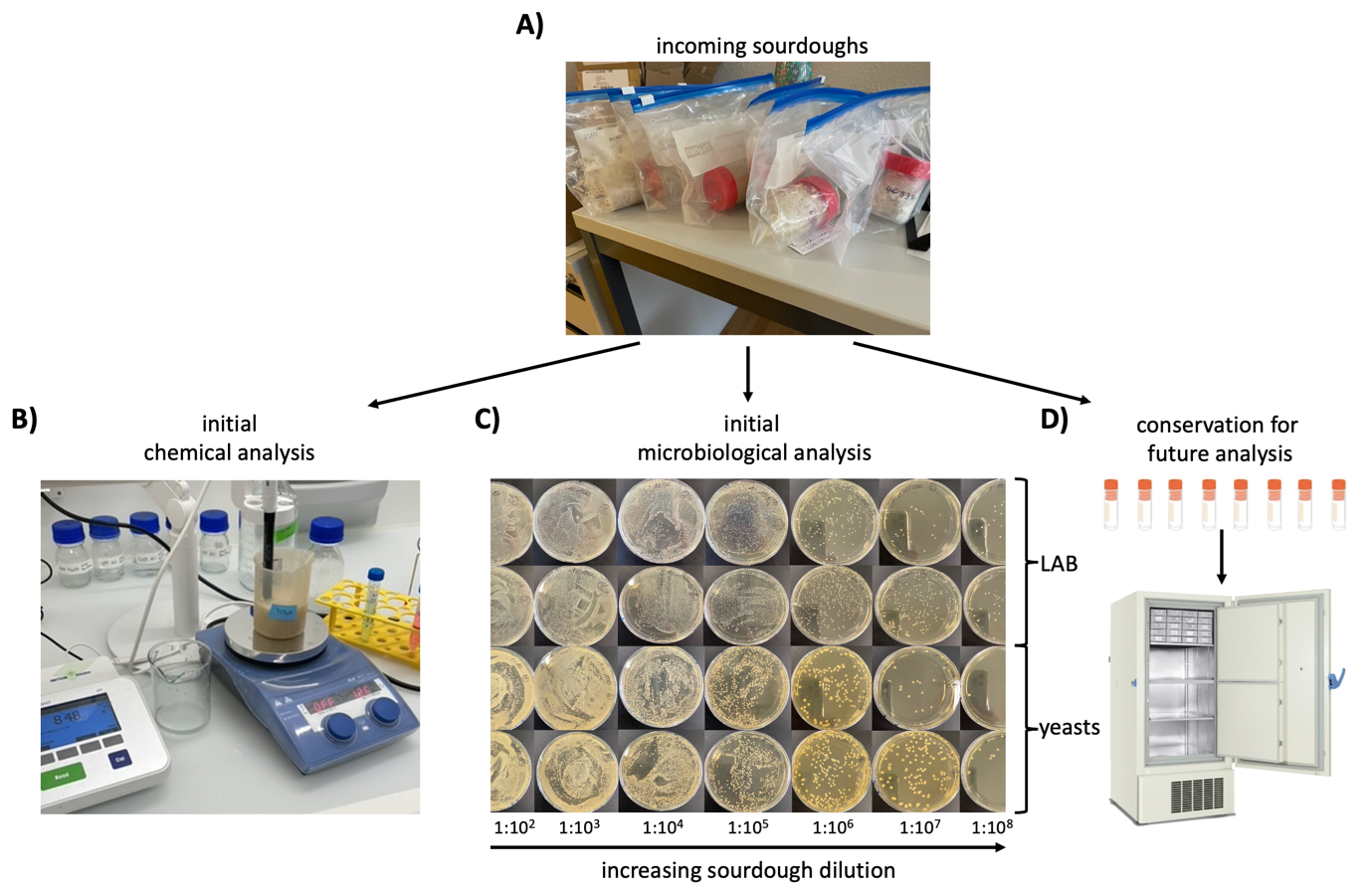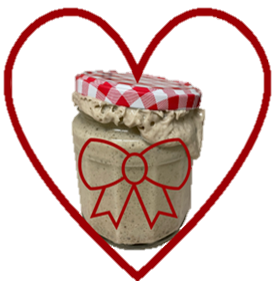HealthFerm Citizen Science - update and delicious recipe!
Dear HealthFerm Citizen Scientists, thank you very much for your active participation in the HealthFerm citizen sourdough project! Since the project collection launch in September, our sourdough community has grown to more than 400 citizen scientists all over Europe! The countries with the most citizen scientists signed up so far are Finland (117), Switzerland (86), Germany (83), Belgium (55), Italy (14), Denmark (11), England (10), and Romania (10). Please help us continue to grow our community over the festive season! We kindly ask you to spread the word to all your friends and acquaintances and share the project link with all sourdough enthusiasts you know, especially those living in countries and regions that have fewer registrations so far (see map). We are thrilled that the community has already grown to more than 400 citizen scientists, and we aim to reach up to 1000 in early 2024, so we highly appreciate your help spreading the word!
 Figure 1: Location of HealthFerm citizen scientists currently registered in Europe. Each dot represents one of you! Registration points are colored according to the universities responsible for recruiting participants and collecting the samples in the respective regions. UBZ: Free University of Bozen-Bolzano, Italy. IBB: Institute of Biology Bucharest, Romania. UH: University of Helsinki, Finland. VUB: Vrije Universiteit Brussel, Belgium. ETHZ: Eidgenössische Technische Hochschule Zurich, Switzerland.
Figure 1: Location of HealthFerm citizen scientists currently registered in Europe. Each dot represents one of you! Registration points are colored according to the universities responsible for recruiting participants and collecting the samples in the respective regions. UBZ: Free University of Bozen-Bolzano, Italy. IBB: Institute of Biology Bucharest, Romania. UH: University of Helsinki, Finland. VUB: Vrije Universiteit Brussel, Belgium. ETHZ: Eidgenössische Technische Hochschule Zurich, Switzerland.
Sourdough Sample Collection
As the initial registrations started pouring in, we have started sending out collection boxes to participants. So please be on the lookout if you receive a parcel from us soon.
A special thank you goes out to everyone who has already sent us their sourdough starters and who, in the midst of the busy holiday season, has been carrying out the sourdough experiments at home.

Figure 2: Sampling boxes ready to be shipped to HealthFerm Citizen Scientists.
Analysis Progress
You may be curious to know what happens to your starters once you ship it to us. In short, upon arrival (A) we register each sample and check, that each sample is labeled with the unique identifier. Then we analyze the (B) acidity, (C) how much microorganisms are inside, and (D) preserve your starters for future studies. In the coming months we will use DNA sequencing techniques to identify the microorganisms living in each and every sourdough.

Figure 3: Sourdough sample processing upon arrival in the lab. A) containers with your precious sourdough samples. B) Setup for initial chemical analysis: beaker containing sourdough dilution to determine acidity (e.g. pH) via the immersed pH sensor. C) Initial microbiological analysis: selective plates for either lactic acid bacteria (LAB) or yeasts. Each tiny dot, called colony, is the result of one single bacterium or one yeast cell replicating on the round plate. To be able to count the abundance of yeasts or bacteria (number of colonies) in each one of your sourdoughs, the sourdoughs are highly diluted. Very bacteria and yeast rich sourdoughs must be diluted up to 10^9 times to be able to distinguish and count single colonies! D) For future analysis, we conserve your sourdoughs. This means that we distribute dilutions of each sourdough in small vials and then store these vials in a freezer at -80 °C until further processing.
We determine the acidity levels with sensors that are more sensitive than the pH-strips provided in the sampling kit. Therefore, our pH-measurements often indicate even lower values compared to your measurements at home. To the owner of the starter 5cade, you will be pleased to know that you currently hold the record for the most acidic sourdough so far with a pH of 2.4. This is around as acidic as Coca-Cola or some milder vinegars!
In parallel, we determine microbiologically how much bacteria and yeasts are growing within your sourdoughs.
We conserve your samples for more in-depth analysis, which will be done and results communicated as soon as we gather a sufficient number of samples (our community goal of approximately 1000 Citizen Scientists). So, you can actually speed up the process by encouraging more sourdough lovers to participate in our project ;)!
Thank you for your interest and active contribution! We appreciate your patience as we work on providing detailed analysis results of your very own sourdough. As Prof. N. Bokulich from ETH Zurich puts it, ‘good science, like good bread, takes a little time’.
On behalf of HealthFerm, we wish you all the best for the holiday season and a good, healthy and tasty start to the new year. Stay tuned for more news and updates from the sourdough and other fermented foods front.
-- HealthFerm project team --
p.s. Please read on if you´d be interested in trying out a delicious sourdough recipe!
Have you ever tried a sweet recipe using sourdough? As a little inspiration for the new year, here is one of our favorite recipes with sourdough:

These moist and fluffy Sourdough Cinnamon Buns definitely deserve a place next to all the Christmas cookies. But don’t just take our word for it, take a moment and convince yourself:
Ingredients
Dough
- 120 g active sourdough starter
- 500 g flour
- 120 g warm milk
- 100 g butter, soft
- 2 eggs
- 70 g sugar
- 1 teaspoon of salt
Filling
- 70 g butter, melted
- 140 g raw sugar
- 3-4 teaspoons of cinnamon
- 2 teaspoons of vanilla sugar
Coating
- 4 tablespoons of milk
- 2 tablespoons of icing sugar
Frosting
- 100 g cream cheese
- 50 g icing sugar
- ½ teaspoon of lemon juice
Instructions
Milk, butter and eggs can be replaced by vegan alternatives. Oat drink is particularly suitable as a milk alternative.
- Combine all the ingredients for the dough and knead well. Depending on the hydration of your sourdough, the dough may stick a little. In this case, gradually knead in a little more flour until the dough can be formed into a homogeneous ball. If the dough is too dry and crumbly, gradually knead in a little more milk.
- Shape the dough into a ball and cover it in a bowl with a damp cotton cloth. Allow it to rest until it has doubled in volume. The warmer the ambient temperature, the faster the microorganisms from the starter will multiply. If you are in a hurry, you can heat the oven to 30 °C (but not more than 40 °C!) and use it as a climate chamber for the dough. This stimulates the growth of yeast, lactic acid and acetic acid bacteria, ensuring a balanced production of lactic and acetic acid, as well as CO2 formation. This results in a light and fluffy dough.
- For the filling, mix the soft butter (or butter alternative) with the cinnamon and sugar until you have a spreadable cinnamon paste.
- Knead the dough again and roll it out in portions (approx. 0.5 cm thin). Spread with the filling and roll it up. Be sure to ‘glue’ the end of the dough to the roll so that the filling stays in place when cutting into buns.
- Use a sharp knife to cut the rolls into pieces (approx. 4 cm wide).
- Place the buns in a baking mould with ENOUGH space between them. The longer you leave the cinnamon rolls to rest, the bigger and fluffier they will be! It is best to cover the entire mould again with the damp cotton cloth and let it rise again for at least 30 minutes and up to 4 hours, either inside the oven or at room temperature.
- Coat the cinnamon buns with the milk and icing sugar coating and bake at 200 °C with top/bottom heat for 25-30 minutes or until golden brown.
- Mix the ingredients for the frosting and spread it on the cinnamon buns while they are still hot. Tip: a vegan frosting alternative with 70 g coconut milk, 50 g icing sugar, a pinch of salt, and 2 tbsp cornflour is also a very tasty choice.
Enjoy! Bon apétit! En Guete! Guten Apetit! Buon appetito! Eet smakelijk! Hyvää ruokahalua!
Happy festive season, happy (sourdough) baking and a great start to the new year,

your HealthFerm crew
